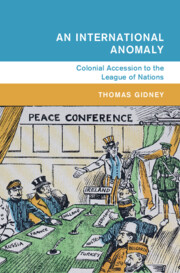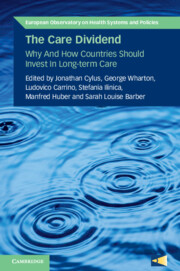Refine listing
Actions for selected content:
133363 results in Open Access
The role of previous streptococcal infections in adult patients with obsessive-compulsive disorder: a research study
-
- Journal:
- CNS Spectrums / Volume 30 / Issue 1 / 2025
- Published online by Cambridge University Press:
- 24 March 2025, e38
-
- Article
-
- You have access
- Open access
- HTML
- Export citation
Characterizing of dropouts in the mental health of refugees and asylum seekers (MEHIRA) study examining the effects of a stepped and collaborative care model – a multicentered rater-blinded randomized controlled trial – CORRIGENDUM
-
- Journal:
- Psychological Medicine / Volume 55 / 2025
- Published online by Cambridge University Press:
- 24 March 2025, e95
-
- Article
-
- You have access
- Open access
- HTML
- Export citation
Education, A Thin Concept with A Thick Skin: What Do Supervillains and Antiheroes Teach Us About Virtuous Action-Guidedness?
-
- Journal:
- Episteme , First View
- Published online by Cambridge University Press:
- 24 March 2025, pp. 1-19
-
- Article
-
- You have access
- Open access
- HTML
- Export citation
A Shelah group in ZFC
- Part of
-
- Journal:
- Forum of Mathematics, Pi / Volume 13 / 2025
- Published online by Cambridge University Press:
- 24 March 2025, e13
-
- Article
-
- You have access
- Open access
- HTML
- Export citation
Simulating price subsidies on healthy foods in Mexico
-
- Journal:
- Public Health Nutrition / Volume 28 / Issue 1 / 2025
- Published online by Cambridge University Press:
- 24 March 2025, e74
-
- Article
-
- You have access
- Open access
- HTML
- Export citation
Domestic Institutions, Geographic Concentration, and Agricultural Liberalization
-
- Journal:
- American Political Science Review , First View
- Published online by Cambridge University Press:
- 24 March 2025, pp. 1-17
-
- Article
-
- You have access
- Open access
- HTML
- Export citation
What do we know about the epidemiology of infectious diseases and parasites of free-ranging Neotropical ungulates? Needs and priorities
-
- Journal:
- Animal Health Research Reviews / Volume 25 / 2024
- Published online by Cambridge University Press:
- 24 March 2025, e2
-
- Article
-
- You have access
- Open access
- HTML
- Export citation

An International Anomaly
- Colonial Accession to the League of Nations
-
- Published online:
- 23 March 2025
- Print publication:
- 03 April 2025
-
- Book
-
- You have access
- Open access
- Export citation

The Care Dividend
- Why and How Countries Should Invest in Long-Term Care
-
- Published online:
- 21 March 2025
- Print publication:
- 03 April 2025
-
- Book
-
- You have access
- Open access
- Export citation
Deformation theory for prismatic G-displays
- Part of
-
- Journal:
- Forum of Mathematics, Sigma / Volume 13 / 2025
- Published online by Cambridge University Press:
- 21 March 2025, e61
-
- Article
-
- You have access
- Open access
- HTML
- Export citation
ZIBGLMM: Zero-inflated bivariate generalized linear mixed model for meta-analysis with double-zero-event studies
-
- Journal:
- Research Synthesis Methods / Volume 16 / Issue 2 / March 2025
- Published online by Cambridge University Press:
- 21 March 2025, pp. 251-271
-
- Article
-
- You have access
- Open access
- HTML
- Export citation
Suicide-related stigma and its relationship with help-seeking, mental health, suicidality and grief: scoping review
-
- Journal:
- BJPsych Open / Volume 11 / Issue 2 / March 2025
- Published online by Cambridge University Press:
- 21 March 2025, e60
-
- Article
-
- You have access
- Open access
- HTML
- Export citation
The Anxious Generation: How the Great Rewiring of Childhood Is Causing an Epidemic of Mental Illness By Jonathan Haidt Penguin. 2025. £10.99 (pb). 400 pp. ISBN 9781802063271
-
- Journal:
- BJPsych Bulletin , FirstView
- Published online by Cambridge University Press:
- 21 March 2025, p. 1
-
- Article
-
- You have access
- Open access
- HTML
- Export citation
Altruism, Ethnic Identity, and the Limits of Shared Hardship
-
- Journal:
- Journal of Race, Ethnicity and Politics , First View
- Published online by Cambridge University Press:
- 21 March 2025, pp. 1-23
-
- Article
-
- You have access
- Open access
- HTML
- Export citation
Conceptualizing resistance to the Americanization of finance in advanced economy states: The case of the Canadian-dollar system
-
- Journal:
- Finance and Society / Volume 11 / Issue 2 / August 2025
- Published online by Cambridge University Press:
- 21 March 2025, pp. 165-185
-
- Article
-
- You have access
- Open access
- HTML
- Export citation
Fabrication of ultra-low-absorption thin films via ion beam-assisted electron-beam evaporation
-
- Journal:
- High Power Laser Science and Engineering / Volume 13 / 2025
- Published online by Cambridge University Press:
- 21 March 2025, e38
-
- Article
-
- You have access
- Open access
- HTML
- Export citation
Sensitivity analysis for reporting bias on the time-dependent summary receiver operating characteristics curve in meta-analysis of prognosis studies with time-to-event outcomes
-
- Journal:
- Research Synthesis Methods / Volume 16 / Issue 3 / May 2025
- Published online by Cambridge University Press:
- 21 March 2025, pp. 528-549
-
- Article
-
- You have access
- Open access
- HTML
- Export citation
Gasping, chuckling, wheezing, bellowing and co.: the development of speech representation verbs in Late Modern English
-
- Journal:
- English Language & Linguistics , First View
- Published online by Cambridge University Press:
- 21 March 2025, pp. 1-24
-
- Article
-
- You have access
- Open access
- HTML
- Export citation
Picturing evolution
-
- Journal:
- The British Journal for the History of Science / Volume 58 / Issue 2 / June 2025
- Published online by Cambridge University Press:
- 21 March 2025, pp. 335-337
- Print publication:
- June 2025
-
- Article
-
- You have access
- Open access
- HTML
- Export citation
A critical assessment of matching-adjusted indirect comparisons in relation to target populations
-
- Journal:
- Research Synthesis Methods / Volume 16 / Issue 3 / May 2025
- Published online by Cambridge University Press:
- 21 March 2025, pp. 569-574
-
- Article
-
- You have access
- Open access
- HTML
- Export citation






